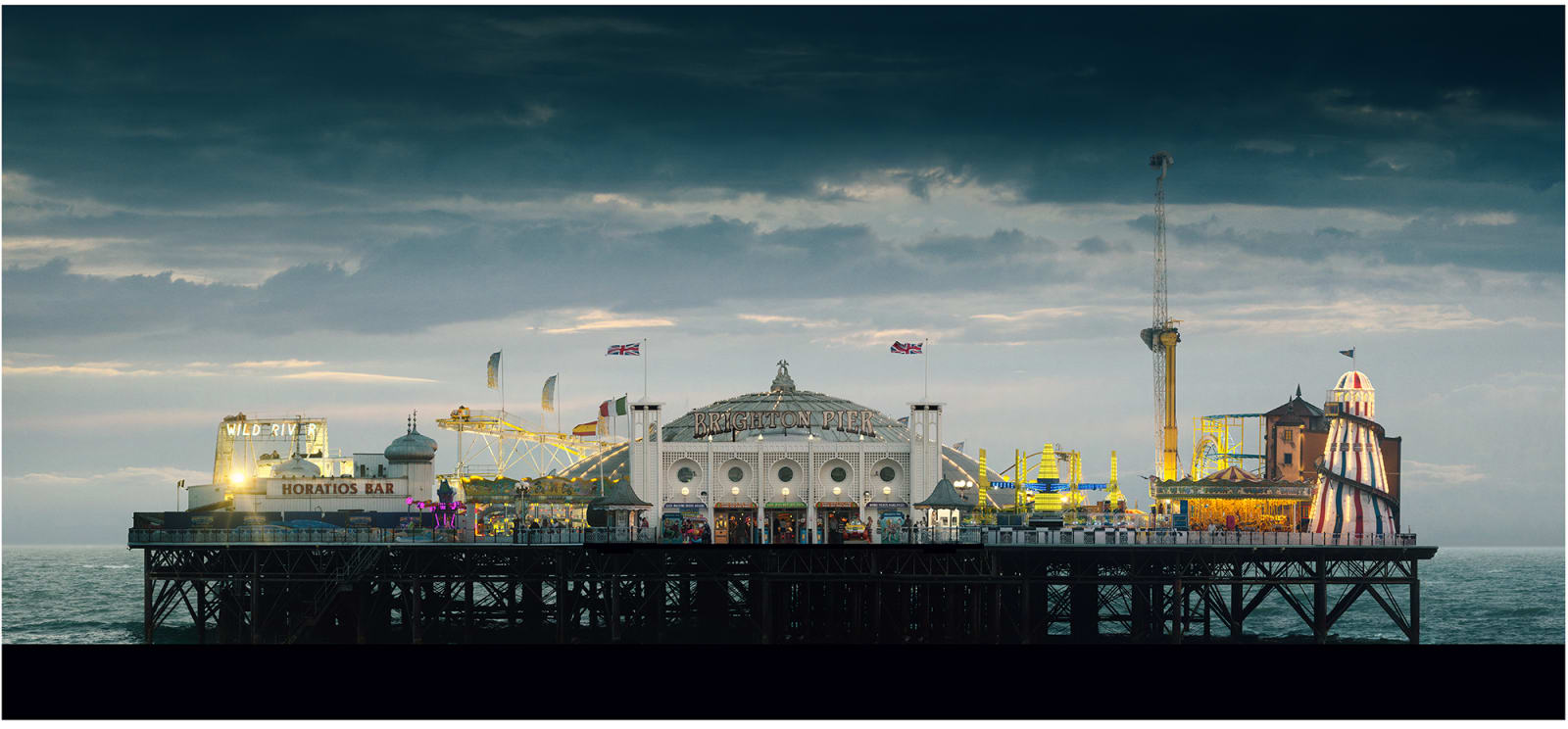Kevin Vucic-Shepherd British, b. 1966
We Dream of Escape, if Only for an Hour, 2015
C-Print on aluminum and plexi
33 x 71 in
84 x 180 cm
84 x 180 cm
Edition 2 of 6 + 2AP
Kevin Vucic-Shepherd was born in Chatham, UK in 1966. His father was a CTO of an avionics company so he spent much of his childhood surrounded by inventors. He was...
Kevin Vucic-Shepherd was born in Chatham, UK in 1966. His father was a CTO of an avionics company so he spent much of his childhood surrounded by inventors. He was always drawn to art and loved drawing from an early age. This combination of art and technology influenced his interest in Architecture. He moved to London attending Westminster University where he received a 1st class honours degree in Architecture and was a runner up for the Royal Institute of Architects president’s medal. He won a scholarship to the Architectural Association School of Architecture where he received his diploma in 1992. Vucic-Shepherd has exhibited in numerous group shows throughout Europe and his work can be found in numerous private collections. Kevin Vucic-Shepherd currently lives and works with his family in London, UK.
ARTIST STATEMENT
My large-scale colour photographs are the result of looking at cities in a unique way. By removing the perspective from urban landscapes, the everyday is transformed into a startling and revealing world. Cameras and eyes work in similar ways; both rely on a lens and a sensor to create an image. It is this similarity that makes us believe a photograph is a simulacrum of the world. We see our surroundings as perspectival and a camera confirms this to us.
However, we know that the world isn’t perspectival. It is only the mediation of a lens, whether of the eye or of the camera, that makes it so. Objects closer to us are not bigger than those far away. 20th Century painting has recognized this, and artists from Cezanne onwards have questioned and attacked the representational primacy of
perspective. This is not the case in photography, where perspective still dominates. What happens when we question that primacy in photography? My photographs are a way of exploring the removal of perspective.
What does an orthographic photograph look like? How does a scaled photograph work?
In the late 2000s I began creating work that sought to explore the idea of an orthographic photograph. I chose simple scenes as subjects to heighten the effect of this flattening. I would take hundreds of photographs and use small fragments to reassemble into a flattened composition. I found that the light at dawn and dusk was best and that a small discreet camera worked well. Since the 2010s I have concentrated on common building typologies: office blocks, houses, and small public buildings.
I like these simple places and wanted to explore them with my flattening technique. I adopted the conventions of architectural scale drawings, primarily the section, but sometimes the elevation. With sections, I can see relationships between main rooms and service spaces, between inside and out, between people and space. By the creation of sections, these overlooked places reveal their hidden beauty. Combining small life events with architectural
structures, I capture a portrait of place.
ARTIST STATEMENT
My large-scale colour photographs are the result of looking at cities in a unique way. By removing the perspective from urban landscapes, the everyday is transformed into a startling and revealing world. Cameras and eyes work in similar ways; both rely on a lens and a sensor to create an image. It is this similarity that makes us believe a photograph is a simulacrum of the world. We see our surroundings as perspectival and a camera confirms this to us.
However, we know that the world isn’t perspectival. It is only the mediation of a lens, whether of the eye or of the camera, that makes it so. Objects closer to us are not bigger than those far away. 20th Century painting has recognized this, and artists from Cezanne onwards have questioned and attacked the representational primacy of
perspective. This is not the case in photography, where perspective still dominates. What happens when we question that primacy in photography? My photographs are a way of exploring the removal of perspective.
What does an orthographic photograph look like? How does a scaled photograph work?
In the late 2000s I began creating work that sought to explore the idea of an orthographic photograph. I chose simple scenes as subjects to heighten the effect of this flattening. I would take hundreds of photographs and use small fragments to reassemble into a flattened composition. I found that the light at dawn and dusk was best and that a small discreet camera worked well. Since the 2010s I have concentrated on common building typologies: office blocks, houses, and small public buildings.
I like these simple places and wanted to explore them with my flattening technique. I adopted the conventions of architectural scale drawings, primarily the section, but sometimes the elevation. With sections, I can see relationships between main rooms and service spaces, between inside and out, between people and space. By the creation of sections, these overlooked places reveal their hidden beauty. Combining small life events with architectural
structures, I capture a portrait of place.
Courtesy of Waterhouse Dodd
Copyright The Artist
